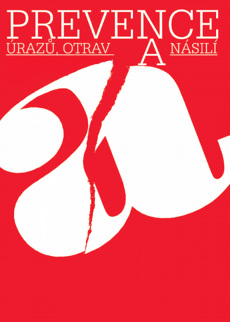SPORTOVNÍ ÚRAZY A LIDSKÝ FAKTOR
SPORT INJURIES AND THE HUMAN FACTOR
Lubomír Kukla1,2, Marie Bouchalová2
1Jihočeská univerzita v Českých Budějovicích, Zdravotně sociální fakulta, katedra klinických oborů; 2Masarykova univerzita Brno, Lékařská fakulta, Výzkumné pracoviště preventivní a sociální pediatrie
Korespondenční autor: Lubomír Kukla (lubomir.kukla@tiscali.cz)
ISSN 1804-7858 (On-line)
Full verze:
Submitted:26. 11. 2007
Accepted: 4. 12. 2007
Published online: 17. 12. 2007
Summary
An epidemiological study of the injury rate in men occurring over about 30 years of their lives demonstrated that the largest contribution (22.3%) should be ascribed to injuries encountered in the course of sport and game activities.
The target of the present work was to determine, what features concerning the persons involved were associated with these injuries, since only identified risks can be helpful in the prevention. The information sources are data from questionnaires submitted by participants when joining the Brno part of the ELSPAC international study. The anamnesis-oriented questionnaire comprised their health, educational, family and occupational history till the time being and identified their social, psychological and economical profiles.
The measure of differences in the occurrence of these characters in men with and without sport accidents is expressed by a relative risk resulting from chi square tests and other comparisons. Compared to controls free of sport accidents, the men involved exerted differences in numerous parameters of their health and mental condition, in the number and extent of experiencing events inducing stress, and in certain features of their style of life and social profile.
Keywords: sport injuries and health disorders – sport injuries and stress – sport injuries and education – sport injuries and neurotic conditions – sport injuries and social network
Souhrn
Z epidemiologické studie úrazovosti mužů za cca 30 let života vyplynulo, že největší podíl na ní představovaly úrazy při sportu a hrách (22,3 %).
Cílem této práce je zjistit, se kterými vlastnostmi postižených byly tyto úrazy asociovány, protože identifikovaná rizika mohou napomoci v jejich prevenci.
Zdrojem dat jsou údaje z dotazníků, které podali účastníci při vstupu do brněnské části mezinárodní studie ELSPAC. Anamnestický dotazník zahrnoval jejich dosavadní zdravotní, výchovnou, rodinnou i pracovní historii a zjišťoval jejich sociální, psychologický a ekonomický profil.
Míru rozdílů ve výskytu těchto znaků mezi muži se sportovními úrazy a bez nich vyjadřuje relativní riziko, vyplývající z chí² testů a dalších komparací.
Ve srovnání s kontrolami bez sportovního úrazu se postižení muži lišili v četných ukazatelích svého zdravotního i psychického stavu, v počtu a míře prožívání stresogenních událostí, v některých rysech svého životního způsobu a sociálního profilu.
Klíčová slova: sportovní úrazy a zdravotní poruchy – sportovní úrazy a stres – sportovní úrazy a vzdělání – sportovní úrazy a neuroticismus – sportovní úrazy a sociální síť
Literatura
- Bouchalová, M., Kukla, L.: Úrazovost v dětství. In: Pediatrie, 1994, 3: 176–181.
- Bouchalová, M., Golding, J., Kukla, L.: Injuries and accidents in childhood. In: Dragonas, T., Golding, J., Ignatjeva, R., Prokhorskas, R.: Pregnancy on the 90 s´, Sansom and Comp., Bristol 1996, p. 26–31.
- Bouchalová, M., Kukla, L.: Úrazovost v brněnské populaci dle stresogenní zátěže z dětství. Podpora zdraví, 1994, 3, 2: 32–43.
- Kukla, L., Bouchalová, M.: Epidemiologická studie celoživotní úrazovosti v populaci produktivního věku. Výzkumná zpráva grantu IGA MZ ČR, VÚZD Brno 1995.
- Kukla, L., Bouchalová, M., Rezková, B.: Epidemiologie úrazových nehod v brněnském souboru ze studie ELSPAC. In: Prevence úrazů, otrav a násilí, 2007, 3, 1, s. 7–19.
- Kukla, L., Bouchalová, M., Rezková, B.: Epidemiologie nejčastějších úrazů v brněnském souboru studie ELSPAC. In: Prevence úrazů, otrav a násilí, 2007, 3, 1, s. 20–32.
- Manciaux, M.: Accidents in Childhood: From Epidemiology to Prevention. Acta Paediat Scand., 1985, 74: p. 163–171.
- Pohyb obyvatel ČSFR v r. 1991. Praha: Fed. stat. úřad, 1992.
- Report on a WHO Technical Group, Brussels: Psychosocial Factors related to accidents on childhood and adolescence. Reg. Office for Europe WHO, Copenhagen 1981.
- Romer, C. J., Manciaux, M.: Research and prevention: still a largely unexplored area. Accidents in childhood and adolescence. Ženeva: WHO, 1991.
- Sand, E. A.: Psychosocial factors in childhood and adolescence, p. 81–91 In: Accidents in childhood and adolescence. WHO, Geneva 1991.
- Škoda, C.: Životní události a nemoc. Zprávy VÚPS, sv. 69, Praha 1985.
- Zeiller, B.: Psychosocial factors in the causation of accidents in adolescence. In: Romer, C. J., Manciaux, M.: (eds) Accidents in childhood and adolescence. The Role of Research WHO, Geneva, 1991.
- Žáček, A., Koukalová, H., Holčík, J.: Ztracené roky potenciálního života – doplněk analýzy úmrtnosti. In: Zdravotnictví, 1985, 35, 8–9, s. 321–331.
